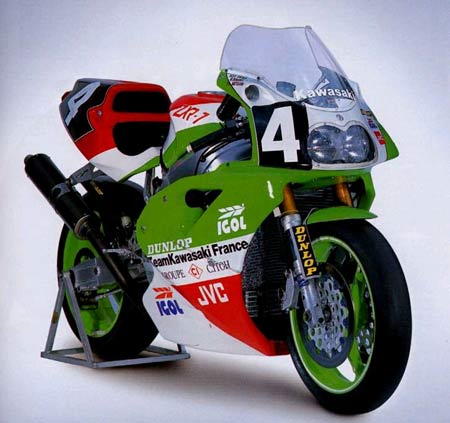Le Mans exhausts
The Le Mans 24 Hour race is a very stern test of man and machine. 24-hour racing is a team event possibly more than any other in motorsport, and requires more effort and more concentration over the course of a race than any other type of racing.
In terms of mechanical stress and strain, the load cycles just keep coming. The mechanical aspect of motorsport is typically concerned with making the lightest piece of equipment suitable for performing its task and which won't break before the end of the event. Endurance racing also has to take account of unexpected failures (they can only be found out through repeated 24-hour testing) and to make the car or motorcycle easy to work on; service items such as tyres and brakes need to be replaced quickly, and more onerous tasks require the car or motorcycle to come apart and go back together easily.
Where the teams put real effort into this, it is very impressive. The big-budget car teams, Audi in particular, are masterful in this regard, but the next best teams I have seen have been the motorcycle teams. The 24-hour races at Le Mans and the 24 Hour Bol D'Or events (sadly no longer held at Paul Ricard) are full of motorcycles with imaginative solutions to make the bikes easy to work on.
Exhaust systems are a case in point. Owing to their necessary curvature, the exhausts are made up of several sections of pipe, often with each held to the adjacent section using springs rather than solid plates as is common in car racing. With a simple spring-pulling tool these exhausts can be removed and replaced quickly. One problem though with using springs on the joints is their tendency to resonate, and working out whether your motorcycle engine excites such resonance isn't an easy matter for the typical privateer team.
However, that is not to say they are destined for a life full of broken exhaust springs; teams have devised a couple of low-cost methods of damping the spring motion. The first, and cheapest, is to run a bead of silicone sealer along the length of the spring. While the exhaust is hot, the spring generally has enough air around it for the silicone to survive.

The second method is to use 'heatshrink'. This is a product more usually used for the outer sleeving of wiring looms, and is available in a variety of (sometimes hideous) colours and materials. Good-quality electrical heatshrink sleeving is generally black and made from a fluorocarbon rubber called Viton, which has high-temperature capabilities (for a rubber). The grade used for heatshrink is more like a normal solid polymer than a conventional flexible rubber. It requires plastic behaviour (in the mechanical sense) in order to have the ability to shrink when heat is applied.
A small-bore tube of the material is expanded to give a permanent deformation (that is, it deforms plastically). This can be slid over the exhaust spring, and when heat is applied via a 'hot air gun' the plastic deformation is partly recovered and the sleeve shrinks, encapsulating the spring but not with enough force to prevent it being fitted.
Fig. 1 - The Le Mans 24 Hour race for motorcycles has shown that ingenuity is not limited to big-budget car teams. This is a 1990s Kawasaki ZXR-7, when the top bikes were beautiful prototypes
Written by Wayne Ward